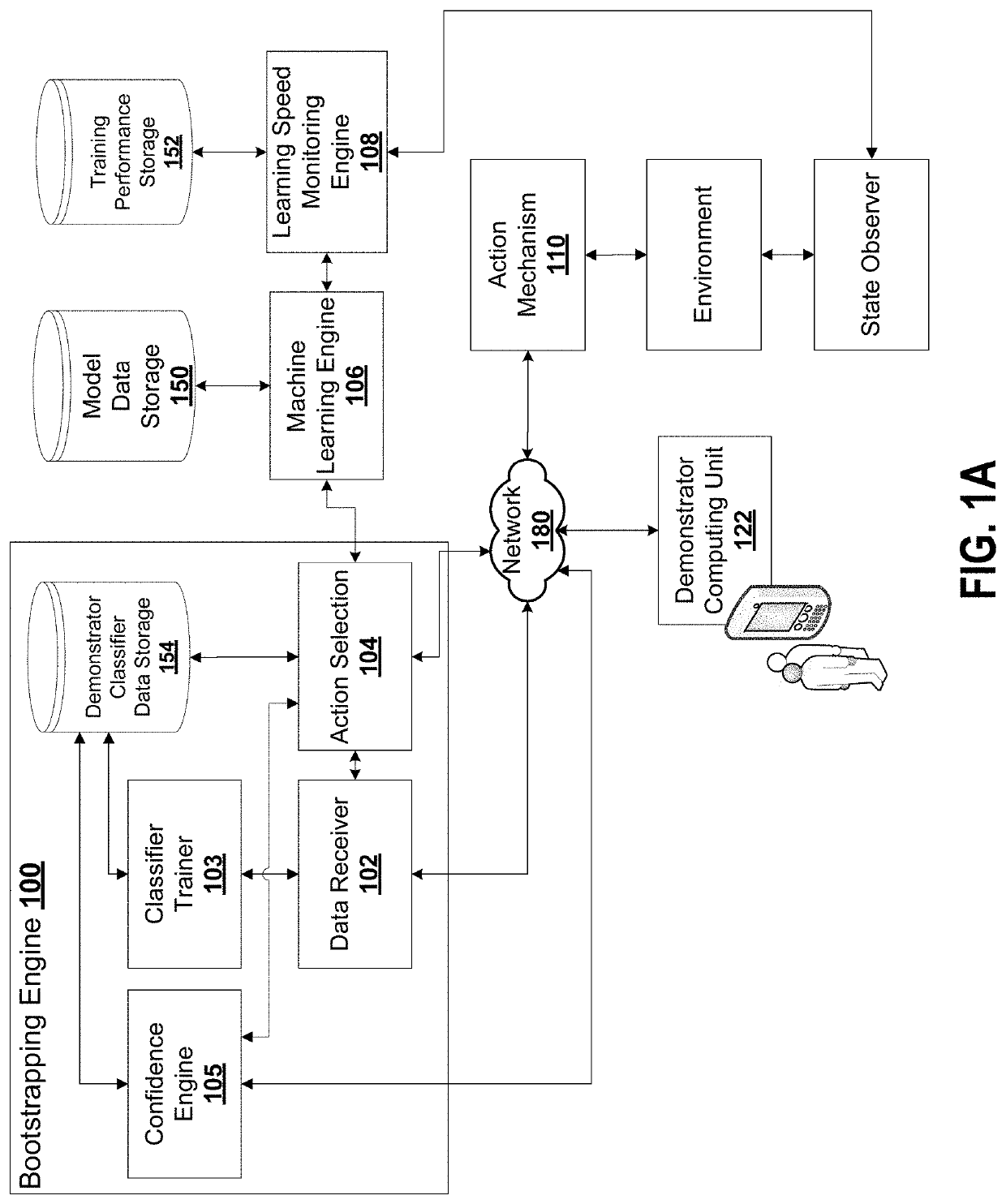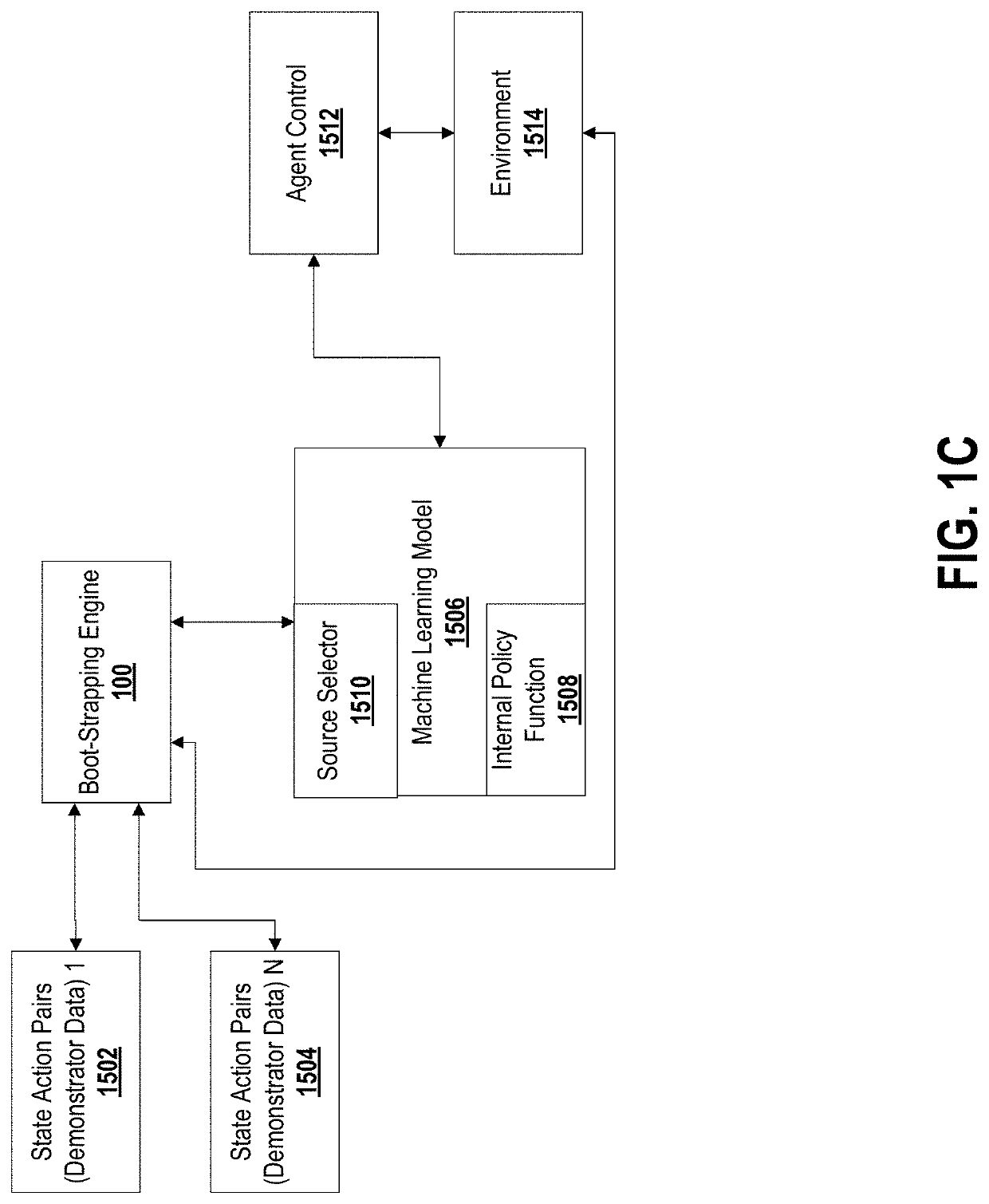Interactive reinforcement learning with dynamic reuse of prior knowledge
a technology of dynamic reuse and reinforcement learning, applied in the field of machine learning, can solve the problems of large number of epochs, slow learning speed of reinforcement learning, and slow convergen
- Summary
- Abstract
- Description
- Claims
- Application Information
AI Technical Summary
Benefits of technology
Problems solved by technology
Method used
Image
Examples
Embodiment Construction
[0059]Reinforcement learning has enjoyed multiple successes in recent years. However, these successes typically require very large amounts of data before an agent achieves acceptable performance. Embodiments described herein introduce a novel approach of combating such requirements by leveraging existing (human or agent) knowledge. In particular, embodiments use demonstrations from agents and humans, allowing an untrained agent to quickly achieve high performance.
[0060]Applicants empirically compare with, and highlight the weakness of, HAT and CHAT, methods of transferring knowledge from a source agent / human to a target agent. A weakness of CHAT is highlighted: its confidence measurement on transferred knowledge is focused on the source demonstration dataset.
[0061]Some embodiments introduce an effective transfer approach, DRoP, combining the offline knowledge (demonstrations recorded before learning) with online confidence-based performance analysis. DRoP dynamically involves the de...
PUM
 Login to View More
Login to View More Abstract
Description
Claims
Application Information
 Login to View More
Login to View More - R&D
- Intellectual Property
- Life Sciences
- Materials
- Tech Scout
- Unparalleled Data Quality
- Higher Quality Content
- 60% Fewer Hallucinations
Browse by: Latest US Patents, China's latest patents, Technical Efficacy Thesaurus, Application Domain, Technology Topic, Popular Technical Reports.
© 2025 PatSnap. All rights reserved.Legal|Privacy policy|Modern Slavery Act Transparency Statement|Sitemap|About US| Contact US: help@patsnap.com



